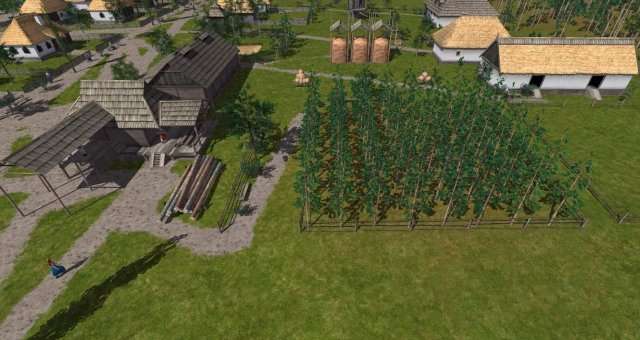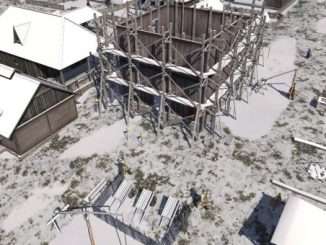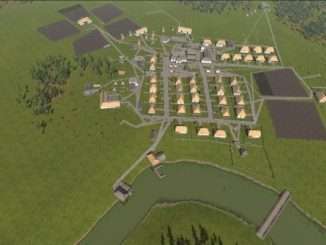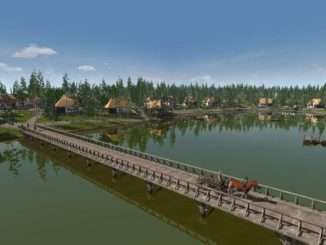
Guide to Farm Mechanics
Introduction
This guide explains the seasonal growth cycle, what the numbers mean for soil nutrients and crop requirements, how fields recover nutrients from lying fallow with and without cattle grazing (and how much they recover), and what exactly is the effect of ploughing. It also describes the effects of sowing late or planting a field that contains too few nutrients.
It won’t tell you what crop rotations to use, but will give you all the information you need to decide for yourself.
The Farming Year
The farming year is divided into distinct seasons. The most important date to remember is the end of February. If you do not select what crops you want to grow in each field before the end of February, the game will automatically grow whatever you grew last year without any possibility of changing it, even if the field has not yet started to be sown (there is an exception for fallow fields, which I will mention later). The other important dates are the end of May, for when you need to have started sowing any crops you want to grow that year, early August for the beginning of harvest, and the end of November, for making sure that all the crops are gathered in.
Winter (December to February)
Nothing grows. No cows graze. The soil does not deteriorate or recover. Use this time to plan what to grow the following summer, and do not miss the cut-off date at the end of February for assigning crops to each field (if you are doing it manually, without a farm manager).
Spring (March to May)
This is the time for ploughing and sowing. It is also a period when crops grow, and the earlier a crop is sown, the longer it has to grow and the higher the yield. Any field you want to use must have a crop selected and be activated (note: do it in this order; select the crop before activating the field) before the end of May. Fallow fields recover their nutrients during this time.
Summer (June to early August)
Crops continue to grow till mid-July, when they start to ripen. Ripening always starts in mid-July regardless of when a field was actually sown. Fallow fields recover their nutrients during this time.
Autumn (early August to November)
This is the season for harvest and gathering in. It is important that harvest and gathering in is completed before the snow falls in December, otherwise that part of the crop will be lost. Fallow fields without grazing cattle do not recover nutrients in the autumn, but fields with cattle grazing still continue their recovery. Cows are brought in at the beginning of November.
Nutrients
Each field has three nutrients: red, blue and green. It does not matter what these nutrients represent, but what does matter is that each crop needs a certain amount of each, listed here:
Wheat
- Red – 50
- Green – 60
- Blue – 0
Buckwheat
- Red – 0
- Green – 20
- Blue – 60
Sunflower
- Red – 100
- Green – 60
- Blue – 30
Potato
- Red – 50
- Green – 30
- Blue – 0
Hemp
- Red – 10
- Green – 0
- Blue – 69
If a field has these numbers or higher for each nutrient, then you can grow the crop in the field. Additional nutrients have no effect, except that they will still be in the soil for growing crops the following year.
If a field in which you want to grow a crop does not have the required nutrients, then you have three options:
- Plough the field. This adds 15 of each nutrient to what the field has already.
- Sow the field anyway. Running out of a nutrient has a considerable effect on crop yield, but if there is only a small shortfall, then it might be worth sowing the field anyway. Since you will have a reduced yield, you should lower the field’s priority by sliding it to the bottom in the Farm window, so that other (full yield) fields will be sown first.
- Set the field to fallow – but you must ensure that no cattle graze on it. There is a cheat, in that you can leave a field fallow up to the end of May and then plant it with a crop. While it is fallow it will recover 15 of each nutrient a month. When it has recovered enough nutrients, de-activate the field, select the required crop and re-activate it. You must do this before the end of May, Note that because you are sowing late, there will be less growing time, and so the yield will be reduced.
Of course, it might be better just to create a new field and leave the old one fallow.
Nutrient Depletion
If a crop is planted as quickly as possible at the beginning of March, the numbers in the table above are how much each nutrient in the field will be depleted. Nutrients are consumed from when sowing is finished until mid-July when ripening starts, and if you sow a crop late, then the depletion will be less. Sowing at the beginning of April, for example, rather than at the beginning of March, only requires 80% of the nutrients shown in the table, but the yield will be less because of the shorter growing season.
Nutrient Replenishment
Nutrients are replenished by:
- Ploughing (15 of each nutrient added).
- Leaving a field fallow (77 of each nutrient added over the year).
- Leaving a field fallow and grazing cattle on it (seemingly 100 of each nutrient added).
The difference that grazing cattle makes is that it extends the period of replenishment; an ordinary fallow field replenishes from the beginning of March at 15 of each nutrient a month, but then it stops in early August when harvesting starts, whereas fields with cattle continue to replenish, probably all the way till the end of November.
Ploughing and Sowing
Sowing is the most important time of year in Ostriv. The growing season is about 20 weeks, from the beginning of March to the middle of July. If you sow a crop a week late, its yield will be reduced by 5%. If you don’t sow it until the beginning of April, the yield will be reduced by 20% and if you leave it till the last minute and don’t sow till the end of May, the yield will be reduced by 40%. To maximise crop yields, you should have as many workers and labourers available to sow your fields at the beginning of March.
Workers and Labourers
The farm can employ up to five workers and twenty labourers. Workers are more expensive than labourers, and are only needed in the springtime for driving ploughs, but you may well choose to fill all five slots just to maximise the farm labour force. Of course, you should free up workers from other parts of the village, by sacking workers and turning off labourers in buildings, if you want to ensure the maximum number of workers in the fields.
Time Taken to Plough and Sow a Field
A full set of workers and labourers can sow a maximum-sized field in about four game-days (smaller fields take less time, of course, and there does not appear to be any advantage in having a few large fields rather than a lot of small ones)
A single farm worker can plough a maximum-sized field in about twelve game-days, about the same time it takes a full set of workers to sow three fields. These twelve game-days are enough to reduce the crop yield by about 8%, but ploughing is worth it if you need the nutrient recovery. If you also have three or more non-ploughed fields to sow, then one of the fields would be sown late anyway, and ploughing won’t delay this any further.
Crop Yields
These numbers are very approximate, for a maximum-sized field with all the required nutrients, sown with the maximum number of workers and labourers at the beginning of March:
- Wheat – 2900
- Buckwheat – 3260
- Sunflower – 2940
- Potato – 3260
- Hemp – 3260
As mentioned earlier, each week’s delay in sowing reduces the yield by 5%. Running out of nutrients can have a devastating effect, and one crop planted with a 60% shortfall in one nutrient produced only 12% of the standard yield.





Be the first to comment